News
Polar Bear Fears Groundless Say Scientists
In a forthcoming paper scientists show that fear of polar bears going extinction are groundless.
(Washington, D.C. 4-4-08) In a forthcoming paper (http://www.forecastingprinciples.com/Public_Policy/PolBears.pdf) scientists show that fear of polar bears going extinction are groundless.
The U. S. government commissioned studies to support the listing of polar bears as a threatened or endangered species. Polar bear numbers are currently high and the population has been increasing rapidly in recent decades. Everyone likes polar bears, so this is good news. A decision to list would require forecasts that the current upward population trend will reverse. The government studies concluded that polar bear populations would decrease substantially.
“Decision makers and the public should expect people who make forecasts to be familiar with the scientific principles of forecasting just as a patient expects his physician to be familiar with the procedures dictated by medical science,” says J. Scott Armstrong.
Three scientists, J. Scott Armstrong of the University of Pennsylvania, Kesten Green of Monash University, and Willie Soon of The Harvard-Smithsonian Center for Astrophysics, audited the government studies to assess whether they were consistent with forecasting principles. Their paper, “Polar Bear Population Forecasts: A Public-Policy Forecasting Audit,” has been accepted for publication in the management science journal Interfaces. It is the only peer-reviewed paper on polar bear population forecasting that has been accepted for publication in an academic journal.
They concluded that the government forecasts were based on false assumptions and their polar bear population forecasts contravened many principles for scientific forecasting. Indeed, the reports followed fewer than one-sixth of the relevant principles. Given the importance of the forecasts, all principles should be properly applied. In short, the government reports do not provide relevant information for this decision.
Research shows that for issues such as the population of polar bears—situations that are complex and where there is much uncertainty—the best forecast is that things will follow a “random walk;” in effect, this model states that the most recent value is the best forecast for all periods in the future. Because the polar bear population has been increasing over recent decades, however, a continuation of that trend over the short term is possible.
Text of Armstrong, Green and Soon’s forthcoming paper is available at http://publicpolicyforecasting.com/.
Media contact: J. Scott Armstrong, (http://bl121w.blu121.mail.live.com/mail/ApplicationMain_12.4.0080.0327.aspx?culture=en-US&hash=3235703610), 215-898-5087

More News

The Influence of CO2 on Plant Antioxidants
Center for the Study of Carbon Dioxide and Global Change. "The Influence of CO2 on Plant Antioxidants.” Last modified January 8, 2015. http://www.co2science.org/subject/a/summaries/antioxidants.php.
Released On: 1/16/2015
Views: 6494
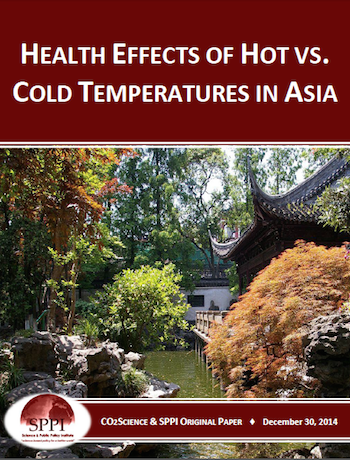
Health Effects of Hot Vs Cold Temperatures in Asia
Health Effects of Hot Vs Cold Temperatures in Asia.
Released On: 1/5/2015
Views: 6727

Coral Reef Responses to Temperature Stress: Thermal Adaptation
Coral Reef Responses to Temperature Stress: Thermal Adaptation. As living entities, corals are not only acted upon by the various elements of their environment,they also react or respond to them.
Released On: 12/29/2014
Views: 6361

Forest Growth Response to CO2
Forest Growth Response to CO2. By examining various properties of tree rings, researchers can deduce how historical increases in the air's CO2 concentration have already affected tree productivity and water use efficiency.
Released On: 12/29/2014
Views: 4986

Onward Marches the Great Pause
Onward Marches the Great Pause. Since October 1996 there has been no global warming at all (Fig. 1).
Released On: 12/29/2014
Views: 4029

RESPONSE OF VARIOUS MARINE ANIMALS TO OCEAN ACIDIFICATION AND WARMING
RESPONSE OF VARIOUS MARINE ANIMALS TO OCEAN ACIDIFICATION AND WARMING.
Released On: 12/8/2014
Views: 3686

FACE EXPERIMENTS AND GRASSLAND SPECIES
FACE EXPERIMENTS AND GRASSLAND SPECIES.
Released On: 12/8/2014
Views: 4261

EFFECTS OF OCEAN ACIDIFICATION ON FISH
EFFECTS OF OCEAN ACIDIFICATION ON FISH.
Released On: 12/8/2014
Views: 4276

Response of Fish to Ocean Warming
Response of Fish to Ocean Warming. According to the IPCC, CO2-induced global warming will be net harmful to the world's marine species.
Released On: 11/21/2014
Views: 4187

Long-Term Open-Top-Chamber Study of Sour Orange Trees
Long-Term Open-Top-Chamber Study of Sour Orange Trees. Eight 30-cm-tall sour orange tree (Citrus aurantium L.) seedlings were planted directly into the ground at the Agricultural Research Service's U.S. Water Conservation Laboratory in Phoenix, A ...
Released On: 11/21/2014
Views: 4214
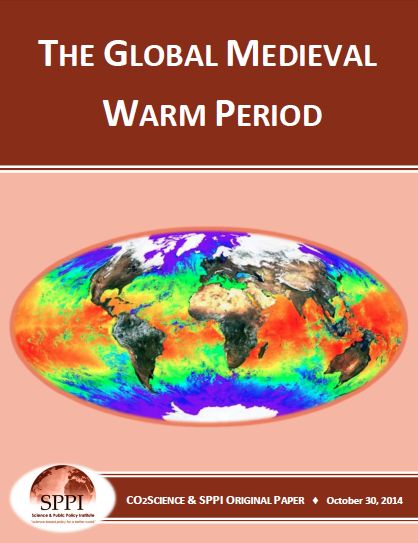
The Global Medieval Warm Period
The Global Medieval Warm Period. Between the 10th and 14th centuries AD, earth's average global temperature may have been warmer than it is today.
Released On: 11/21/2014
Views: 4028
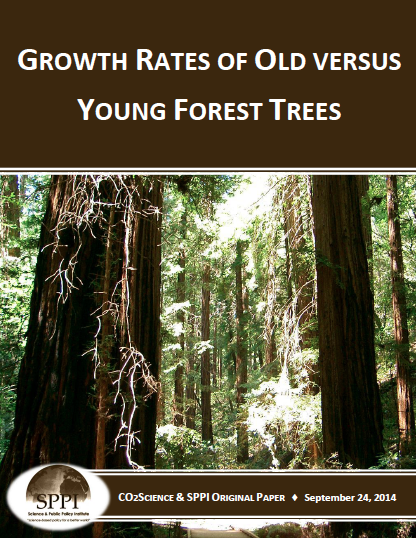
Growth Rates of Old versus Young Forest Trees
Growth Rates of Old versus Young Forest Trees. The planting and preservation of forests has long been acknowledged to be an effective and environmentally-friendly means for slowing climate-model-predicted CO2-induced global warming.
Released On: 9/30/2014
Views: 4290
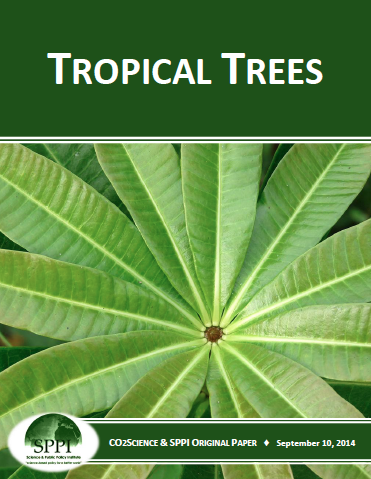
Tropical Trees
Citation: Center for the Study of Carbon Dioxide and Global Change. "Tropical Trees.”
Released On: 9/30/2014
Views: 4357
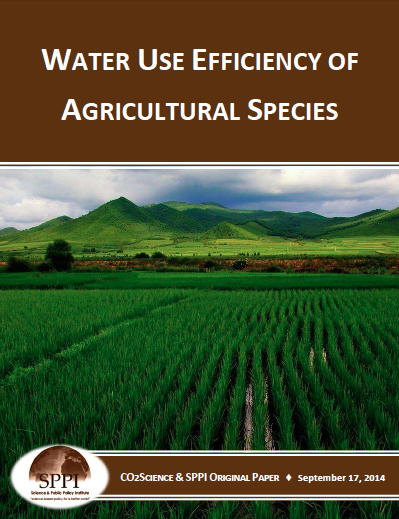
Water Use Efficiency of Agricultural Species
Water Use Efficiency of Agricultural Species.
Released On: 9/30/2014
Views: 4240
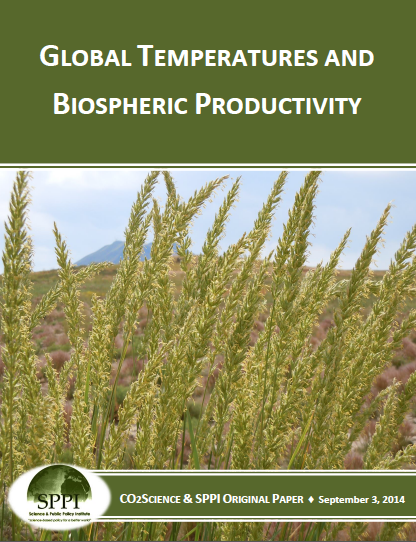
GLOBAL TEMPERATURES AND BIOSPHERIC PRODUCTIVITY
Global temperatures and biospheric productivity. Among the many climate-alarmist fears of CO2-induced global warming is the concern that the productivity of the biosphere will decline if global temperatures rise to the extent predicted by compute ...
Released On: 9/13/2014
Views: 4222
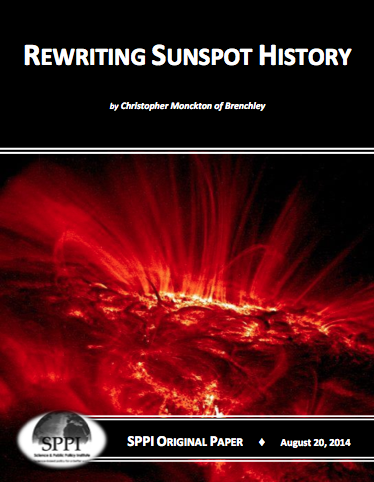
REWRITING SUNSPOT HISTORY
Rewriting sunspot history. In 2006, when I first made the mistake of writing publicly of my doubts about the Party Line on manmade global warming.
Released On: 9/13/2014
Views: 4284
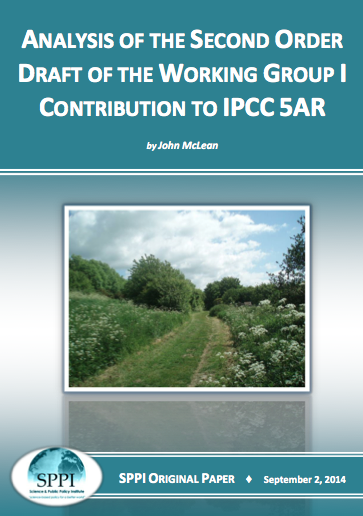
ANALYSIS OF THE SECOND ORDER DRAFT OF THE WORKING GROUP I CONTRIBUTION TO IPCC 5AR
ANALYSIS OF THE SECOND ORDER DRAFT OF THE WORKING GROUP I CONTRIBUTION TO IPCC 5AR. The preparation of IPCC Assessment Reports involves several stages.
Released On: 9/13/2014
Views: 4104
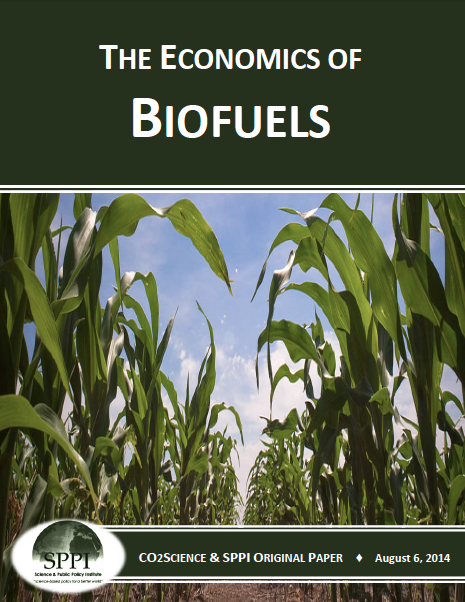
THE ECONOMICS OF BIOFUELS
The economics of biofuels. Aside from rejecting biofuel expansion and use for environmental reasons.
Released On: 9/13/2014
Views: 3944



